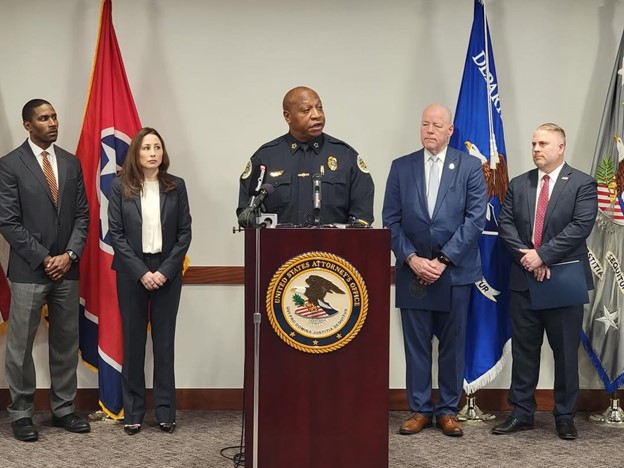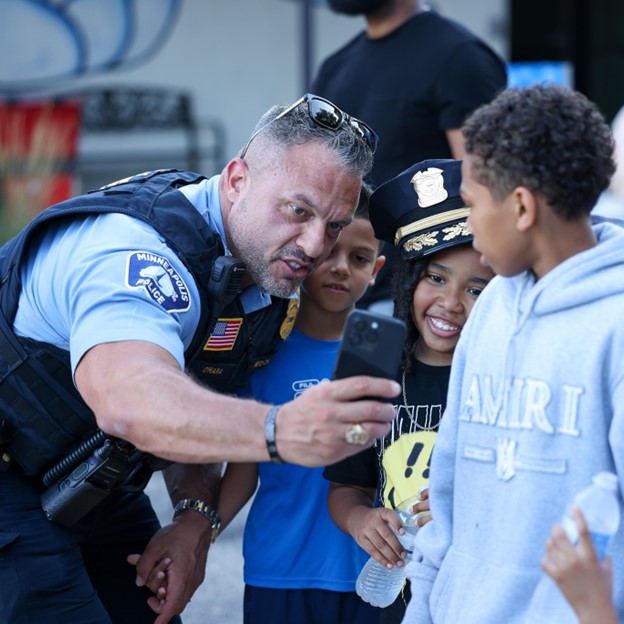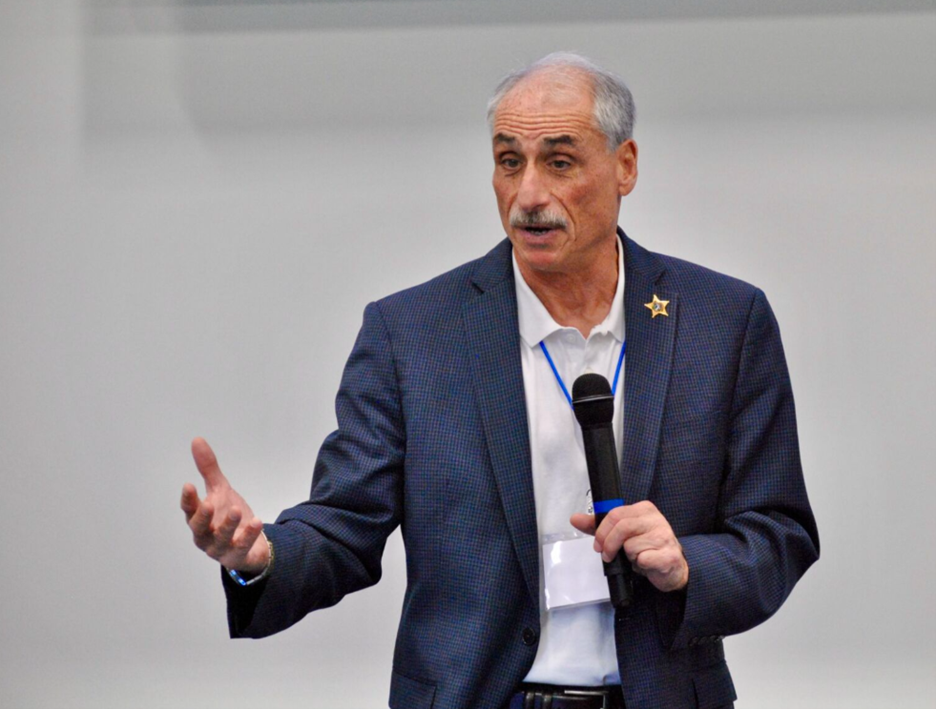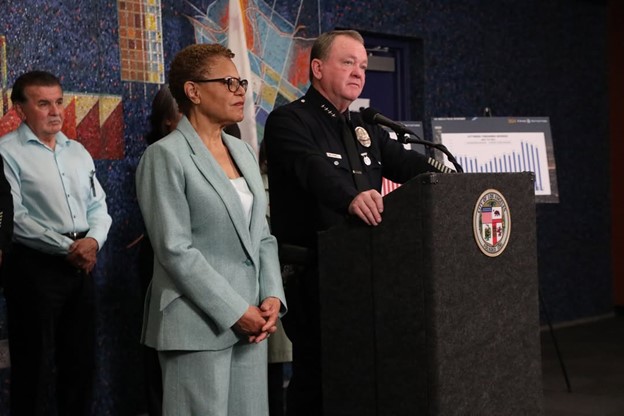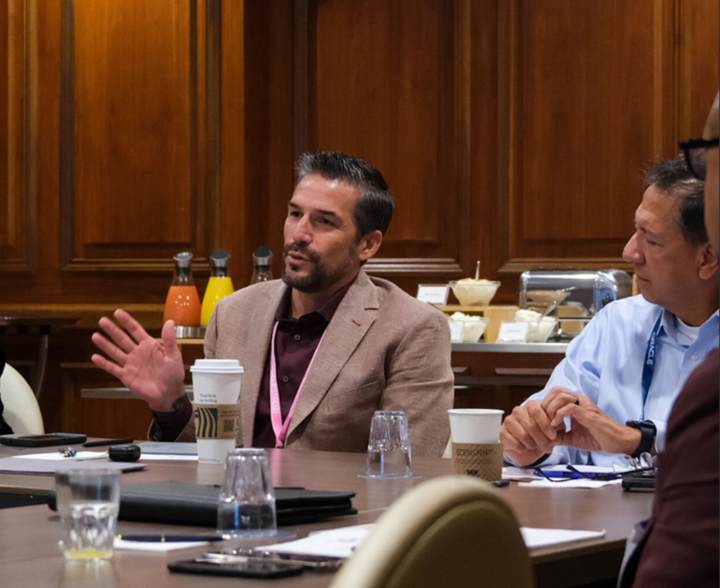|
April 12, 2025 Balancing community trust and enforcement: The complex issue of immigration
PERF members, Immigration has always presented challenges for local law enforcement. The new presidential administration's emphasis on immigration enforcement has only accentuated those challenges. As I’ve spoken with police chiefs and sheriffs over the past few months, there is broad consensus that law enforcement at all levels must take enforcement action against violent offenders who are in the United States with or without legal authorization. But with 11 million undocumented people in the country, most cities and towns have undocumented residents who have been living and working in their communities for years. Many chiefs and sheriffs have told me that some people in their communities are now afraid to send their children to school, go to a hospital for medical treatment, or report crime or otherwise assist the police because they think those actions may result in immigration enforcement action against them or a loved one. For today’s column I spoke with five police leaders about how their agencies are approaching issues related to immigration enforcement. I interviewed Metropolitan Nashville (Tennessee) Chief John Drake, Minneapolis (Minnesota) Chief Brian O’Hara, and Volusia County (Florida) Sheriff Mike Chitwood as a group and Los Angeles (California) Chief Jim McDonnell and Tucson (Arizona) Chief Chad Kasmar individually. All five said that earning and maintaining the trust of their immigrant communities is essential to learning about crimes in their jurisdictions and to identifying and apprehending offenders. Chiefs and sheriffs are watching closely to see if the federal government’s emphasis on immigration enforcement reduces crime reporting in their communities. They also tell me that this population is not generally driving crime trends, an observation supported by research. Police leaders are looking to Congress for comprehensive immigration reform. In the meantime, they don’t want to be caught in between their communities and federal law enforcement. Metropolitan Nashville Chief John Drake We’ve had conversations with our federal partners to explain that our task force officers will not be involved in any immigration enforcement activities. We will do criminal enforcement activities, and if [our federal partners] want to do something with immigration enforcement, they can. That’s been received okay. There’s a big push by the legislature here to give us immigration enforcement powers. I’ve gone on several radio and TV shows to let people know that it’s really not in the best interest of local law enforcement to deal with immigration because we need the trust of the community.
Chief Drake speaking at a February news conference about the arrest of eight Venezuelan nationals for human trafficking. Source: MNPD on Instagram Before this administration, we started to see a rise in crime involving the Hispanic community as both victims and suspects. Since the administration has taken over, that number has dropped. I can’t say that’s attributed to the new administration, but the timing is the same. Is crime still being committed and not being reported? Or are we just doing a good job? We’re trying to weigh those two options. Another thing we’re seeing is that kids are scared to go to school. They’ve been told that if they go to school or church, someone is going to pick them up and they’re going to disappear. That’s scary for a lot of people. I asked [“border czar”] Tom Homan during a Major Cities Chiefs Association meeting if his office can put out a clear message on what it’s trying to accomplish, but we still don’t know. There’s a lot of chaos right now. We’re managing through it, but it’s a lot of uncertainty. Minneapolis Chief Brian O’Hara In the beginning there was a lot of bluster around this stuff, and a whole lot of chaos. Minneapolis has extremes on both sides. The extreme left was going crazy at every little thing. The extreme right is attacking the cops here for not participating in immigration enforcement. And then we have all the associated chaos. I had to meet with some of the hospitals as they created procedures because they were afraid that ICE was going to come in and try to get access to patients inside the hospitals because of things that had been said. Elected officials here are on heightened alert. We will be out with our law enforcement partners conducting focused enforcement against very bad people, and whenever elected officials see unmarked cars or vests that say “police,” I get all these phone calls. The council just passed a resolution that they want to study how many times I’m using the helicopter because they think the helicopter is circling areas for ICE.
Chief O’Hara takes a selfie with kids at a National Night Out Event in August. Source: MPD on Instagram There’s all sorts of confusion being driven by the narrative, but what’s actually happening here is not much of anything. ICE is conducting surveillance and arresting some people here and there. This initial fear that there were going to be roadblocks and massive sweeps has not come to be realized. But it has definitely had an impact on the community and still has an impact every day. I just had a meeting with the Mexican consulate because we have a lot of people from Mexico here. And in Minneapolis we have to try to establish trust with communities that have not trusted us before. And we had made some gains. At the Ecuadorian consulate, we’d have a police car there because they were holding their elections, or because they had some robberies of their community members. Now they’re afraid of us showing up because when ICE does come into the community, they’re in plain clothes wearing vests that say “police” and people in the community don’t know the difference between our badge and an ICE badge. So it’s been a very complicated set of problems. But the amount of bluster and rhetoric is what’s actually causing the problem, not what enforcement is or is not being done. Volusia County Sheriff Michael Chitwood Our governor called a special session in January, and they passed Senate Bills 2C and 4C. The bill said that any law enforcement officer in the state who assists ICE, whether it’s with transportation, traffic control, or whatever it may be, can get a $1,000 bonus. The second part of the bill is that any elected official—sheriff, mayor, county councilperson, or anyone else elected—who in any way interferes with the state’s ability to enforce immigration laws or doesn’t cooperate with ICE will be removed from office and levied with a $5,000 personal fine. All 67 jails in the state of Florida are mandated to sign an agreement with ICE to train our personnel to become warrant service officers. So if a person is arrested and brought to jail, and jail personnel determine there is a warrant on them, the jail personnel would notify ICE and begin to process them. All 67 county sheriffs had to sign a memorandum of understanding with the state and with ICE saying that in the near future, a designated number of our agency have to be trained to become immigration task force members. I have 25 deputies who are slated to be trained as task force officers. I’ve submitted my name because I want to go through the 40-hour training to know what’s going on.
Sheriff Chitwood. Source: File photo The legislature also passed a law that if you arrest somebody in the state of Florida and they can’t prove citizenship, they’ll be charged with a misdemeanor. And if you see them enter the state illegally, it’s a felony. But that law has been put on hold by a federal judge in Miami. ICE officials in Washington, D.C., have said that we can’t have 67 jails get involved in immigration enforcement; we can only have the 7 or 8 jails that have already been certified by ICE and have a contract with ICE. That has thrown a monkey wrench into the system, because 500 state troopers have already been trained to become immigration agents through the 40-hour course. So they’re scooping up people on these warrants but in some cases are 200 miles from a jail that’ll accept them. There are 1.4 million removal warrants that have been issued by an administrative judge for automatic deportation when you come in contact with these folks. Law enforcement has never had access to that database. About a month ago, on a Sunday night, ICE dumped 700,000 of these warrants into NCIC. So people are making car stops and it’s popping up that this person has a deportation warrant. But some people have multiple names or the same name as someone else, and you have no way to verify that the person you’ve stopped is the person they have the warrant for, because you don’t have access to the biometrics. So it’s confusion. Everybody is running in different directions, and everybody is contradicting one another. We have a large farm community in the northwest part of my county that relies on itinerant workers. I’m meeting with them next month to discuss the things my deputies have to do now. It used to be that if somebody didn’t have a driver’s license or committed retail theft, we didn’t have to notify ICE. Now we do. We were originally told that federal law enforcement wanted help with five categories: criminal illegal immigrants who were probably members of a gang, those who were a danger to public safety, those who were a danger to national security, those who have been deported and reentered the country, and any of those 1.4 million deportation orders that have been issued. They wanted our help to notify them and hold the individual. But what we’re seeing is that they’re deporting some other people outside those categories, and that’s putting a lot of palpable fear into my migrant communities. Los Angeles Chief Jim McDonnell The new administration coming on board has created a lot of anxiety in our immigrant community and in the greater community as well. There was concern that the LAPD would be working closely with ICE and enforcing civil immigration laws. We are not doing that. We haven’t done anything like that since Special Order 40 was issued in 1979 under Chief Daryl Gates. Our directive was clear back then, and that’s been how we’ve done business my whole time on the job. We don’t stop anybody to determine their immigration status, and their status has nothing to do with anything they’ll be involved in throughout their contact with the criminal justice system in Los Angeles.
Chief McDonnell discusses crime trends and police strategies alongside Los Angeles Mayor Karen Bass. Source: LAPD on Instagram We’ve made a concerted effort to get out to our community and be very public about the fact that if people are a victim of a crime or a witness to a crime, we want them to feel comfortable calling the police, coming forward, and participating in the system without fear of it resulting in civil immigration enforcement. That has been well received in our community, but there is still a high level of anxiety because a lot of people aren’t aware of that or they aren’t sure and are waiting to see what happens. ICE has come to Los Angeles—as they have to many other major cities—and done immigration enforcement. Primarily, it’s been for criminal suspects who have committed violent crimes. We had one that got particular attention, which was a prolific sex trafficking suspect who had smuggled in an obscene number of people for the purposes of trafficking. ICE shut down the street, and we got calls and sent people out there to see what was happening. People were critical that LAPD police cars were at the scene of what they believed to be immigration enforcement. It was a situation where we would have been allowed to participate, but we weren’t involved. We will be at the scene whenever a tactical situation is going on. Our role is still to protect the community, which might mean evacuating houses and getting people potentially out of the line of fire during an operation ICE or HSI might be participating in. Our goal is to keep everybody safe, so I want people to know that seeing us at the scene of an incident where ICE is involved is not unusual or cause for concern. We should be wherever anything is happening in the city if safety might be a concern. Overall, I’d say we’re in a pretty good place now with our community and elected officials knowing where we stand. I think there’s a general comfort level with our posture on this topic. Relationships are everything, and we have relationships with our federal, state, and local partners where we talk all the time, are aware of our strengths and weaknesses, and try to support each other as best we can. We have our people on all sorts of federal task forces, and everyone knows what we can and can’t do. Our federal partners don’t want to jeopardize that relationship so they wall us off if they’re going to be involved in civil immigration enforcement in any way, because they know that’s not something we can participate in. We have state law that guides our behavior on the topic, as well as department policy. I’d recommend all chiefs become comfortable with the topic. It’s not a comfortable topic, but try to become as conversant with it as you can. Communicate with your internal audience so they know what the rules are. Be very open about your guidelines and what you’re able to do with federal agencies, including ICE, and what you’re not able or willing to do. And if you don’t participate in civil immigration enforcement, it’s critical that your community knows that. Tucson Chief Chad Kasmar Tucson is absolutely facing challenges from the current administration on both rhetoric and policy actions. Tucson is the 33rd-largest city in the country. We’re a border community, about an hour north of Sonora, Mexico. And we have great law enforcement partners. It takes about 10 local public safety agencies to keep this region safe. We are the largest policing agency in Arizona south of Phoenix. Our community is very diverse. We are an immigrant-welcoming community, both under our previous mayor and the current mayor. By our own standards, we are not classified as a sanctuary city; we’re an immigrant-welcoming community. So we haven’t been the target of federal action for that reason. We have nearly twice the poverty rate of the country as a whole, so we’re a poor community and require local, state, and federal dollars to maintain operations in the police department and the rest of the city.
Chief Kasmar participates in a meeting of the PERF Immigration Group. Source: File photo Half of my population is Hispanic. Because multiple administrations have failed on immigration policy reform, there’s no meaningful path to gaining citizenship in this country right now. I know folks who have lived here for over a decade, make meaningful contributions to our community, and would like to be naturalized U.S. citizens, but there’s no mechanism for them to do that. We have a guiding policy and practice that’s over a decade old called SB1070. We haven’t had any meaningful legislative changes that have changed the way my organization interacts with the community or community members’ expectations should they have contact with us. We want all of our community members to know that we want them to call us if they are the victim of or a witness to a crime, whether they have legal status or not. What I know, from talking to the community and being a third-generation Tucsonan raising a fourth, is that there’s a massive fear in our undocumented population about coming forward to report something like being the victim of a simple hit-and-run to the Tucson Police Department. That’s at a low level. In robberies, thefts, sexual assaults, and homicides, we have folks who won’t want to cooperate with investigations. In a post–George Floyd world, police chiefs across America have been working hard to regain the confidence of communities and rethink what a safe community looks like. We certainly have been doing that in Tucson. It’s frustrating to me to have the federal government come in with a narrative that started out being about violent offenders but has quickly fizzled down into just targeting anybody who doesn’t have the legal status to be here. To have them come out in our communities and do immigration raids and targeted enforcement beyond violent offenders has done nothing but set us back a decade in the work. Tucson is in our final year of the U.S. Department of Justice’s National Public Safety Partnership program under the current administration. The federal government has played a key role in investing resources and grant funding that help me strategically and smartly reduce violent crime in a very targeted fashion in my community. I’m grateful for that. And that includes working with all our federal partners—FBI, DEA, ATF, ICE, the U.S. Marshals Service, and CBP. We all have great relationships to this day at a leadership and operational level, and I have deep respect for the mission of CBP and ICE. In a community that’s drowning in fentanyl, I’m very appreciative of our efforts to secure the border, and I’ve been calling for that because it decreases human trafficking and cartel activities. It decreases the accessibility of fentanyl in my community. So I commend them for that. But I’ve been on several meetings with ICE, from leadership to operational staff, where they’re telling us the right thing for the community members who don’t have citizenship to do is to turn themselves in to ICE and CBP and self-deport. That’s crazy. That’s not happening in Tucson. I would never encourage our undocumented population to do that. My call for action is for the federal government to enact meaningful, common-sense immigration reform so that people who are here and aren’t violent offenders or sexual predators—and the statistics demonstrate most of them aren’t—have a process where they can stay here. They have jobs here, they have family and children here, and they make meaningful contributions to our community. That’s what makes Tucson vibrant and a special place to live and raise a family. We had over 200 skin-piercing shootings last year and 64 homicides. We absolutely have a gun crisis here in Tucson. Not one of the suspects or victims in those cases was somebody without legal status to be here. I can’t speak to what’s happened in other parts of the country, but I can tell you that in the area around the city of Tucson, those aren’t the individuals involved in violent crime. That’s just not the case, and saying otherwise is spreading fear with misinformation. With a critically low commissioned staff of 750 deployable team members, my strategic areas of focus remain unchanged going into 2025: reducing violent crime and narcotics accessibility, increasing traffic safety, and increasing recruiting and retention. I also want to speak out as the co-chair of the Law Enforcement Immigration Task Force (LEITF). I am concerned about the misinformation related to our border and immigration enforcement activities throughout our country. We have a responsibility, as chiefs of police, to speak up in support of the Constitution and enforcing and following our state laws and local ordinances. Immigration enforcement is a federal responsibility, not a local responsibility. Most chiefs don’t desire to be politicians, and we’re not politicians. We’re just stuck in the world of translating political strategy to operational implementation by leading courageous young human beings who are out there trying to keep their communities safe in a thoughtful manner. In the 10 years post-Ferguson, we have not been invested in as a profession, and that’s disappointing. I wish the federal government would spend some time thinking about how nine months of training doesn’t equip a police officer to deal with very complex issues like immigration reform and dealing with the tension that’s being created from this political narrative. Most major city police departments don’t have the resources to take on federal immigration enforcement activity. I didn’t sign on to a profession that is here to do immigration enforcement beyond SB1070, which is what state law requires me to do. If I had wanted to do that work, which plays a critical role in a safe country, then I would have been a CBP officer or ICE agent, and I suspect most of my officers feel the same way. The Tucson Police Department is built from many homegrown natives who are first-, second-, and third-generation folks who have chosen to live in this country, state, and city and some have family on both sides of the border. So this is an extremely complex issue. Thanks to the chiefs and sheriffs who took the time to share their thoughts with our members. This is an extremely complicated issue, and police agencies are right in the middle of it. As the leaders I spoke to emphasized, chiefs and sheriffs need to understand the issue in depth and to communicate—both with their officers and with the community—about what their agencies are and are not doing with respect to immigration enforcement, Best, Chuck |

